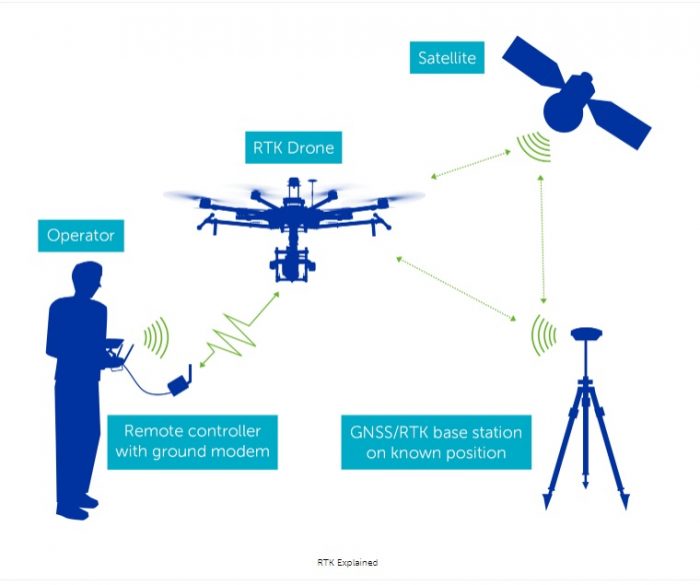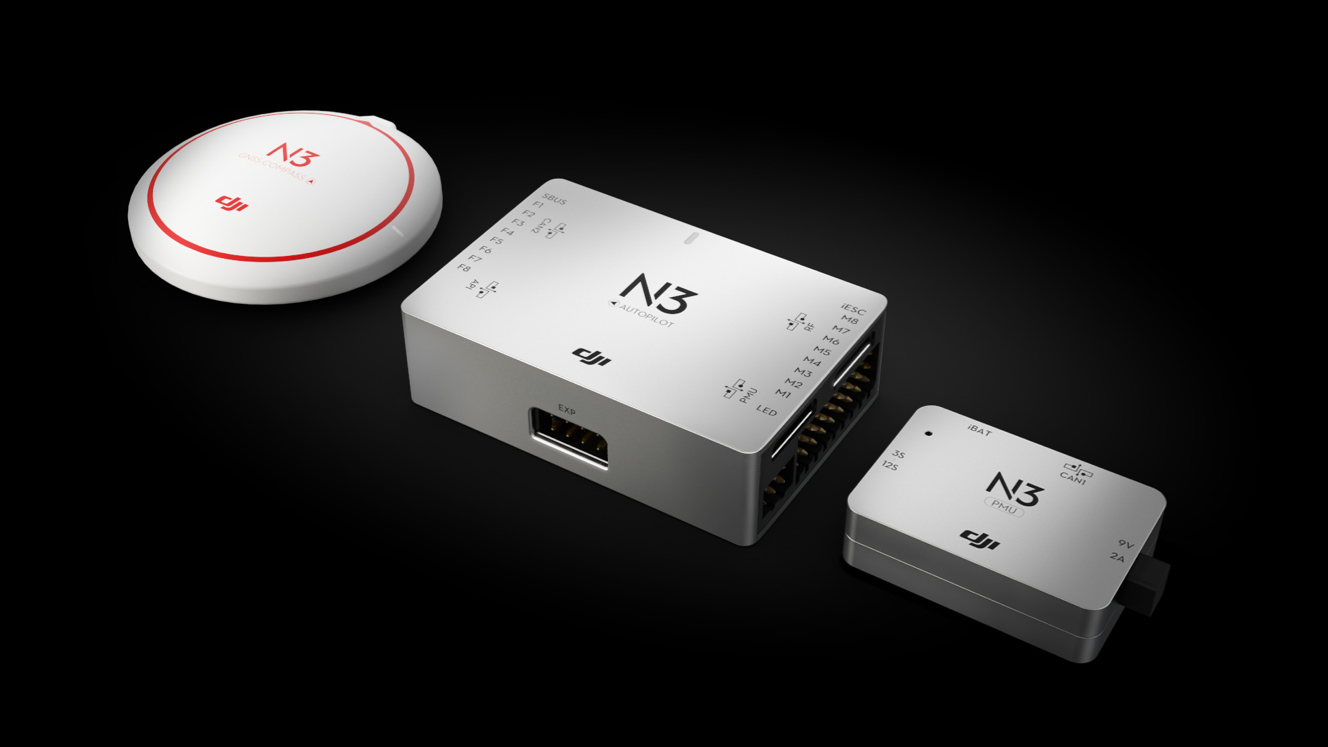SparkNavi Drone Flight Controller and GNSS/INS Made in Taiwan: Accuracy and Innovation
SparkNavi Drone Flight Controller and GNSS/INS Made in Taiwan: Accuracy and Innovation
Blog Article
The Importance of Drone Trip Controllers in Modern Aerial Technology: Trick Parts and Their Influence
In the realm of contemporary airborne modern technology, drone flight controllers work as the critical systems that coordinate a drone's efficiency and capacities. These advanced systems incorporate vital elements such as microcontrollers and GPS modules, promoting stability and accuracy in flight procedures. Their duty is particularly noticable in autonomous functions, where advanced algorithms boost navigating and challenge evasion. As sectors significantly count on drones for applications varying from agriculture to surveillance, the developing technology within flight controllers increases vital questions concerning their future influence and possible innovations. What innovations exist ahead that could redefine our understanding of drone capacities?

Summary of Drone Trip Controllers
In the realm of aerial innovation, drone trip controllers function as the critical brain of unmanned airborne lorries (UAVs), allowing specific maneuverability and stability during trip. These advanced systems incorporate sensing unit information, refining algorithms, and control inputs, permitting drones to execute complex trip patterns with accuracy.
Drone flight controllers make use of various sensing units, such as gyroscopes, accelerometers, and GPS components, to analyze the UAV's orientation and position in real-time. This info is vital for keeping balance and guaranteeing secure operation in diverse ecological problems. The controllers process this data to make instant changes to the drone's motors, enabling smooth transitions and receptive handling.
In addition, flight controllers are furnished with sophisticated software that supports functions such as waypoint navigating, barrier evasion, and autonomous flight capabilities. This software is critical for both leisure and business applications, where reliability and accuracy are critical. As drone modern technology proceeds to breakthrough, the evolution of flight controllers will certainly play a critical function in boosting UAV security, performance, and versatility, inevitably broadening their applications across various sectors.
Trick Elements Explained
Understanding the fundamental elements of drone trip controllers is essential for understanding just how these systems run successfully. At the heart of a trip controller is the microcontroller, which offers as the mind, refining data from numerous sensing units and executing commands. Vital sensors consist of gyroscopes and accelerometers, which determine the drone's alignment and movement, giving vital responses for stabilization.
An additional key element is the measure, which evaluates altitude by determining atmospheric pressure, while general practitioner modules provide positional data, making it possible for independent navigation - SparkNavi drone flight controller and GNSS/INS made in taiwan. The flight controller additionally interfaces with Digital Speed Controllers (ESCs), which control the rate of the drone's electric motors based upon the controller's commands
Communication components, such as radio receivers, promote push-button control input, permitting operators to send out commands in real-time. Additionally, some flight controllers incorporate software program that can deal with complex formulas for waypoint navigating, flight planning, and telemetry information analysis.
Function in Flight Security
Central to preserving flight security, drone flight controllers use advanced formulas to refine sensing unit data and make real-time adjustments. These controllers are outfitted with a range of sensing units, consisting of measures, gyroscopes, and accelerometers, which continually check the drone's elevation, speed, and orientation. By analyzing this information, the trip controller can identify variances from the wanted flight course and react quickly to preserve security.
For instance, if a drone experiences an unanticipated gust of wind, the trip controller can rapidly change visit this page the motor rates to counteract the disturbance, ensuring a stable trip trajectory. This capacity is important not just for hands-on flight operations but additionally for performing complex maneuvers and preserving smooth flight in numerous environmental problems.
.jpg)
In addition, the sophisticated algorithms made use of in trip controllers, such as PID (Proportional-Integral-Derivative) control, permit fine-tuning of the drone's feedback to modifications in flight conditions. By enhancing these control specifications, trip controllers can enhance stability, improve responsiveness, and decrease pilot work. Eventually, the function of flight controllers in making sure trip security is crucial for the risk-free and effective operation of modern-day drones across diverse applications.
Effect On Autonomous Workflow

Independent procedures are particularly vital browse around here in varied applications such as security, agriculture, and delivery services. With improved trip controllers, drones can autonomously navigate established routes, successfully gather data, and adapt to dynamic environments. This capacity reduces the demand for constant human oversight, consequently boosting functional efficiency and security.
In addition, the implementation of artificial intelligence strategies within flight controllers enables drones to boost their efficiency in time by gaining from previous goals. This versatility leads the way for more innovative autonomous applications, such as flock technology, where several drones collaborate their actions to achieve a typical objective.
Future Trends in Flight Controllers
Developments in trip controller technology are poised to transform drone abilities in the coming years. One considerable pattern is the integration of expert system (AI) and artificial intelligence formulas, enabling drones to gain from their atmospheres and make real-time choices. This advancement will improve independent navigating, obstacle evasion, and objective planning, dramatically boosting operational efficiency and safety.
Furthermore, the development of innovative sensing unit modern technologies, such as LiDAR and multispectral imaging, will give trip controllers with richer data inputs. This will promote a lot more advanced analytical capabilities, enabling drones to carry out intricate tasks, such as precision agriculture, search and rescue, and infrastructure assessments with unmatched precision.
An additional arising trend is the miniaturization of trip controller components, which will result in lighter and a lot more small drones. This advancement will certainly prolong flight durations and payload capabilities, making drones a lot more flexible for different applications.
Conclusion
In final thought, drone flight controllers work as essential parts in contemporary aerial modern technology, ensuring security and precision in maneuverability through the assimilation of microcontrollers, accelerometers, and GPS components. SparkNavi drone flight controller and GNSS/INS made in taiwan. Their capacity to make it possible for independent procedures and adjust to various applications highlights their importance throughout numerous markets. As innovations in artificial knowledge and sensing unit modern technology remain to arise, the capacity for enhanced abilities and enhanced functional efficiency in drone systems will likely improve the future of aerial applications
Central to keeping trip stability, drone flight controllers utilize innovative algorithms to process sensing unit data and make real-time changes. By analyzing this information, the flight controller can determine inconsistencies from the desired flight course and respond immediately to preserve security.
Moreover, the sophisticated algorithms utilized in trip controllers, such as PID (Proportional-Integral-Derivative) control, permit for fine-tuning of the drone's action to changes in trip problems. Ultimately, the duty of trip controllers in guaranteeing flight stability is crucial for the efficient and secure procedure of contemporary drones throughout diverse applications.
The advancements in drone trip controllers not just enhance look at this now trip security but likewise considerably affect autonomous operations. SparkNavi drone flight controller and GNSS/INS made in taiwan.
Report this page